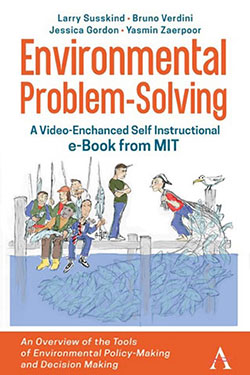Course Meeting Times
Two lectures/week, 1.5 hours/lecture
Prerequisites
There are no prerequisites for this course.
Course Description
This class is required of all DUSP graduate students pursuing an environmental policy and planning specialization. It is open to graduate students (and advanced undergraduates) from other MIT and Harvard departments interested in national environmental and energy policy-making, environmental ethics, the techniques of environmental analysis, and strategies for collaborative environmental decision-making. The primary objective of the class is to help each student formulate a personal theory of environmental planning practice.
The course has four parts: Federal Environmental and Energy Policy-Making, Environmental Ethics, Techniques of Environmental Analysis, and Public Participation and Collaborative Decision-Making. The first part explores the dynamics of public policy-making in the United States and strategies that interest groups can use to promote changes in policy. The second examines the ethical and philosophical underpinnings of environmental planning. The third looks at the strengths and weaknesses of key techniques of environmental analysis like cost-benefit analysis, environmental impact assessment, modeling and simulation, sustainability analysis, life cycle analysis, and risk assessment. The fourth part of the course explores collaborative decision-making and dispute resolution techniques as they are used in the practice of environmental and energy facility planning.
Recitations are not required, but they are useful. These are sessions, led by the TA, in which students can discuss the written assignments before each is due.
Text
Environmental Problem-Solving (Susskind et. al, 2017, Anthem Press), a video-enhanced eBook, provides students with full access to all the assigned readings, faculty commentary on the readings, and examples of the best student performance on course assignments in previous years.

(Image courtesy of Anthem Press and used with permission.)
 Susskind, Larry, Bruno Verdini, et al. Environmental Problem-Solving: A Video-Enhanced Self Instructional e-Book from MIT. Anthem Press, 2017.
Susskind, Larry, Bruno Verdini, et al. Environmental Problem-Solving: A Video-Enhanced Self Instructional e-Book from MIT. Anthem Press, 2017.
Grading
| ACTIVITIES | PERCENTAGES |
|---|---|
| Written Assignments (4) | 40% |
| Oral Presentations (3) | 30% |
| Final Exam | 25% |
| Attendance, Reflection on Humboldt simulation | 5% |
